- Updated Teej 2025 Date and Time in Nepal with Dar Khane Din Included:
- History of Teej Festival
- Why is Teej Celebrated in Nepal?
- Reasons for Celebrating Teej: What is Teej celebrated for?
- How is Teej celebrated in 2082?
- Teej Festival in Nepal 2025: Date and Significance
- Where is Teej Celebrated?
- Is Teej celebrated for husband?
- Teej songs: Popular, classic, and New ones Tij songs
- Top 20 Famous Teej Songs of All Time – Nepali Teej 2025 Special
- Teej Festival: Types of Teej Celebrated Outside Nepal
Teej is a significant religious celebration widely celebrated in Nepal and India; it is an important Hindu holiday that honors the divine bond between Lord Shiva, the God of transformation and destruction, and his wife, Goddess Parvati, who embodies devotion and love. Teej focuses on cherished aspects of the Hindu community's rich religious and cultural traditions. Wearing vibrant red and green clothing that represents fertility and prosperity, women actively participate in rituals that foster spiritual development and purification. This holy religious event allows people to interact with nature and appreciate its beauty through joyful singing, dancing, and feasting.
Teej 2025: Teej in Nepal in 2025 will be celebrated from August 26th to August 28th. The main fasting day, also known as the day of Rishi Panchami, is on August 28th, 2025, Thursday (Bhadra 12 2082). The first day, Dar Khane Din, "दर खाने दिन"(August 25th before Haritalika Teej (Monday), Bhadra 09 2082), involves feasting and celebration, while the second day is dedicated to fasting.
Key Dates for Teej 2025:
- Dar Khane Din: Monday, August 25, 2025
- Haritalika Teej (Main Day): Tuesday, August 26, 2025
- Rishi Panchami: Thursday, August 28, 2025
Check out the latest top 20 teej songs, both old and new, for 2025. These songs reflect the joyous spirit of Teej, combining tradition with modernity, and are sure to create memorable moments during the celebrations. Whether it's dancing or singing along, these tracks will keep the festive vibes alive!
People can interact with nature and enjoy its beauty during this holy religious event, which is marked by joyful singing, dancing, and feasting. Participants can interact with nature and enjoy its beauty during this holy religious event, which is marked by joyful singing, dancing, and feasting. This sacred religious event is characterized by joyful singing, dancing, and feasting, allowing participants to engage with nature and revel in its beauty. Through these collective festivities, the spirit of Teej cultivates an atmosphere of solidarity and support, reminding everyone of the power of unity and shared joy. It marks a reminder of the significance of love and commitment in relationships, fostering a sense of community and belonging among participants. Teej is a treasured occasion in many people's lives because of the exquisite way these celebrations highlight the essence of devotion and appreciation for nature.
Updated Teej 2025 Date and Time in Nepal with Dar Khane Din Included:
- २०८२ भदौ ९, सोमवार | Aug 25, 2025, भदौ शुक्ल द्वितीया | दर खाने दिन (Dar Khane Din, 2082, Bhadra 09, Monday)
- Day 1 of Teej (Starting day): Haritalika Teej date in 2025 falls on Tuesday, August 26, which corresponds to 2082 Bhadra 10 in the Nepali calendar, specifically Bhadra Shukla Tritiya. According to the Government of Nepal and the official calendar, this day is observed as a public holiday for female employees only, recognizing the cultural and religious significance of the festival.
- The second day of Teej 2025 falls on Wednesday, August 27, which is 2082 Bhadra 11 in the Nepali calendar, corresponding to Bhadra Shukla Chaturthi. This day holds dual significance as it marks both Ganesh Chaturthi—a Hindu festival honoring Lord Ganesh—and Rashtriya Dharmasabha Diwas (National Religious Assembly Day) in Nepal.
- The final day of Teej 2025 (Rishi Panchami date) is observed on Thursday, August 28, which corresponds to 2082 Bhadra 12 in the Nepali calendar, or Bhadra Shukla Panchami. This day is celebrated as Rishi Panchami Vrata, a significant Hindu purification ritual where women perform ceremonial baths and worship the Sapta Rishi (seven sages) to seek forgiveness for any ritual impurities committed during menstruation.

History of Teej Festival
The Teej festival celebrates the beginning of the monsoon season, womanhood, and devotion. The story of Goddess Parvati's devotion to and union with Lord Shiva is thought to be the origin of Teej. The Hindu women celebrate this festival, deeply linking it to Hindu mythology, emphasizing love, perseverance, and marital devotion. Beyond its religious importance, the festival fosters community unity and promotes joy and camaraderie among participants. Teej manifestations of colorful customs and culture strengthen families and the divine.
The Legend of Teej: Parvati's Devotion to Shiva
Parvati yearned to wed Shiva, the Hindu mythology, who was engrossed in meditation and uninterested in love. Unfazed, she committed to fasting and prayer on Mondays during the holy month of Shrawan (July–August), which is devoted to Lord Shiva as part of her 107 lifetimes of intense penance (tapasya). Her 108th incarnation was a princess rebirth, this time as King Himalaya's daughter. Parvati was devastated but steadfast in her wish to be with Shiva when her father decided to marry her to Lord Vishnu because he believed it was the best option for her. After noticing her sadness, Parvati's close friend Hartalika assisted her in getting away to a remote forest, where she continued to fast and meditate while giving up all worldly pleasures. After being moved by her unwavering devotion and dedication, Lord Shiva finally came to her and took her as his wife. Teej honors their union, representing the victory of faith, love, and patience.
Teej is also called Hartalika Teej after the friend who helped Parvati pursue devotion because of this story. The festival also acts as a reminder of how strong female friendships are and how far people will go in the quest for love. Through these festivities, women convey their aspirations for a happy and loving married life.
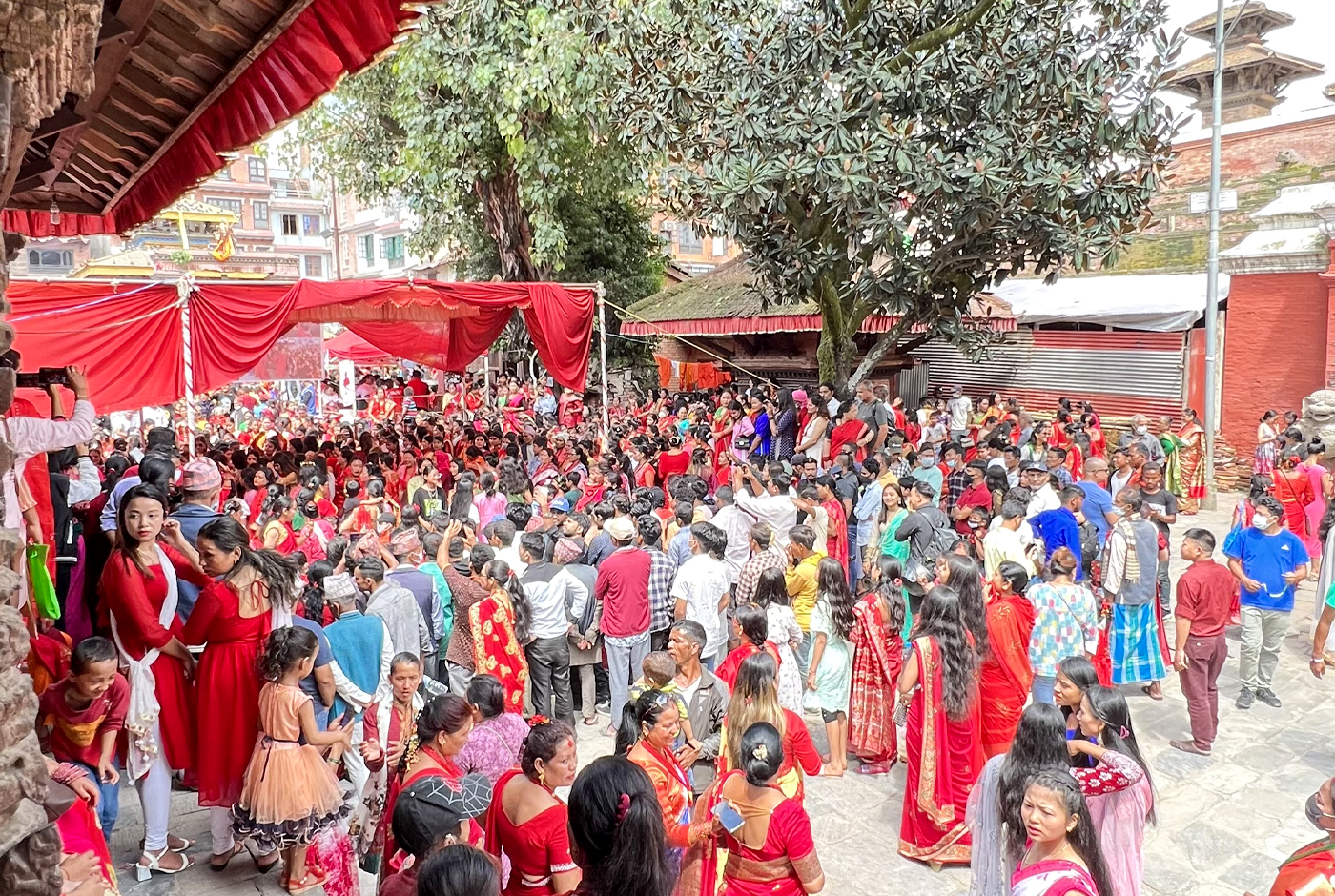
Why is Teej Celebrated in Nepal?
Hindu women in Nepal and India celebrate the Hindu festival of Teej to honor the divine bond between Lord Shiva, the deity of transformation and destruction, and his wife, Goddess Parvati, who embodies devotion and love. This festival is culturally and spiritually significant, as women engage in various customs and celebrations during this time that help them feel more connected to their families and increase a sense of community among all those involved. Women also use Teej to embrace the monsoon season's lively spirit and wish for marital happiness.
Reasons for Celebrating Teej: What is Teej celebrated for?
To Strengthen Marriages
Teej represents love, devotion, and the resilience of marital bonds. It tells the story of Goddess Parvati's fast devotion to Lord Shiva, during which she performed hard penance, fasting, and intense meditation to win his love and get married. Single women and girls pray for a compatible life partner, while married women draw inspiration from the festival's stories to fast and pray for their relationships. This celebration highlights the importance of love and commitment in marriage, encouraging couples to deepen their understanding of faithfulness and loyalty.
Teej strengthens bonds within families and communities, prompting reflection on promises and vows. The festival allows couples to express their love and appreciation, bringing families together to create lasting memories and reinforce connections. Ultimately, Teej is a powerful reminder of enduring love, promoting unity and harmony within the Hindu community.
To Seek Blessings for the Family
Hindu women pray to Shiva and Parvati for joy, long life, and prosperity for their families. Their heartfelt fasting and dedication are believed to play a key role in ensuring their spouse's and children's health and wellbeing, ultimately fostering a sense of harmony within the household. This custom reflects a firm cultural conviction that spiritual devotion can safeguard and promote the wellbeing of families.
Additionally, women develop their aspirations and fortify their bonds with one another when they gather to pray. By sharing this common goal for the success and happiness of their loved ones, they foster a community where they can encourage one another. Women find comfort in understanding that their sacred journey of marriage is filled with love and devotion for each other, which brings the utmost prosperity to the family. Ultimately, this holy practice nurtures both individual and collective strength, making the celebration of Teej a significant experience for all involved.
To Purify the Body and Soul
Teej is a time for self-control and cleansing, involving more than just daytime fasting. Women fast for Mirjana vrata, which consists in avoiding food and water to purify their bodies and minds. According to their beliefs, this devotion will atone for previous transgressions and promote spiritual rejuvenation. The ritual bath utilizing red mud and Datiwan leaves, a plant of great religious significance in Hinduism, is essential for spiritual purification on Rishi Panchami, the third day of Teej. In addition to serving as a purification symbol, this practice strengthens ties to tradition and heritage. Women can also enhance their spiritual resolve by using it as a chance for introspection and reflection.
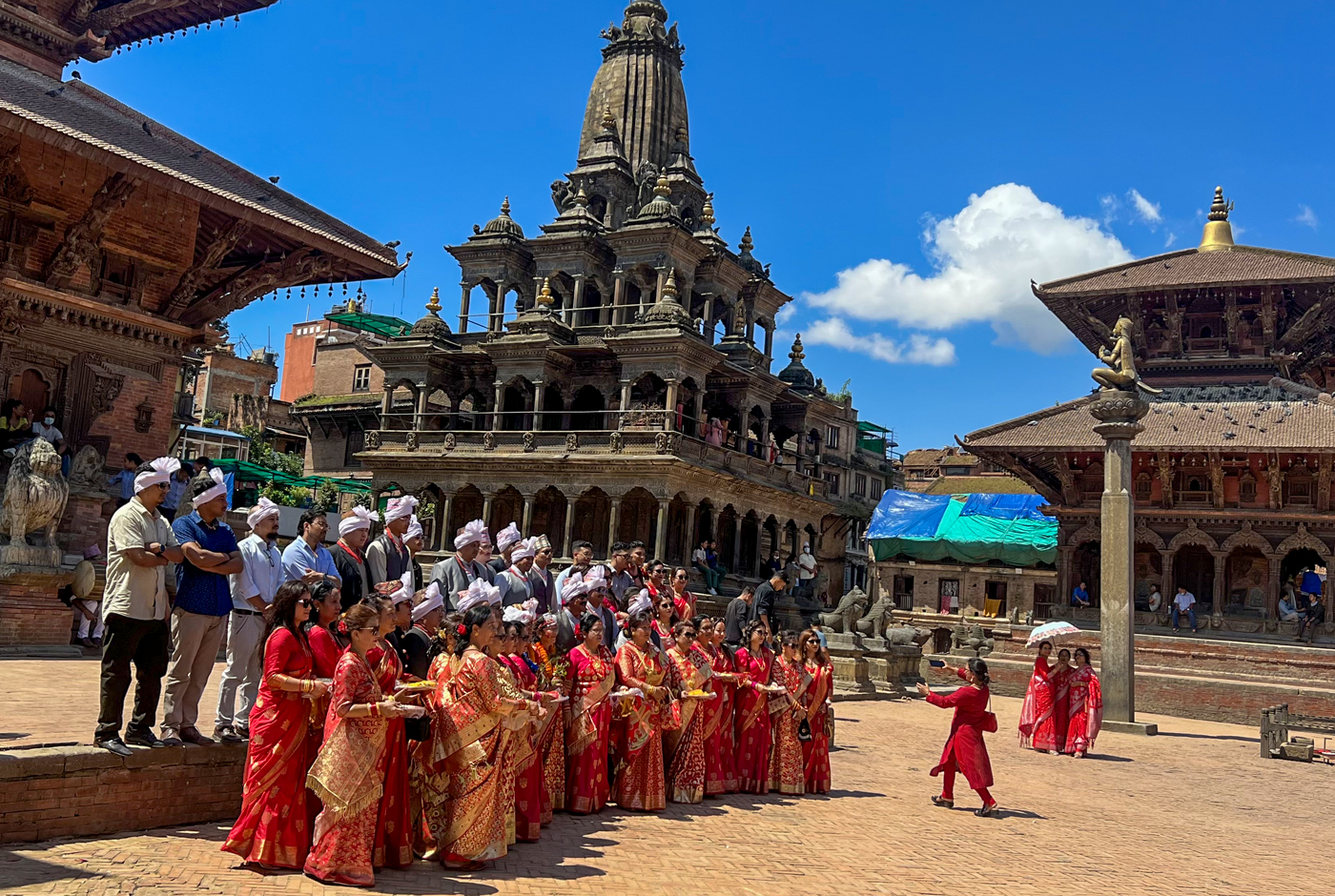
To Celebrate the Monsoons
With the arrival of the monsoon rains, which bring fertility, verdant surroundings, and relief from the summer heat, Teej is a festival that symbolizes happiness and respect for the natural world. In Nepal, the rainy season is vital to agriculture, and women express their joy through dancing, singing, and exuberant celebrations. Families across the Hindu community gather to enjoy the season's bounty; this celebration emphasizes the beauty of nature and strengthens the community's sense of unity. The lively religious observance held during Teej also serves as a reminder of the connection between human life and the environment, encouraging appreciation for nature's gifts.
How is Teej celebrated in 2082?
Mehendi: A Symbol of Beauty and Good Fortune in Teej
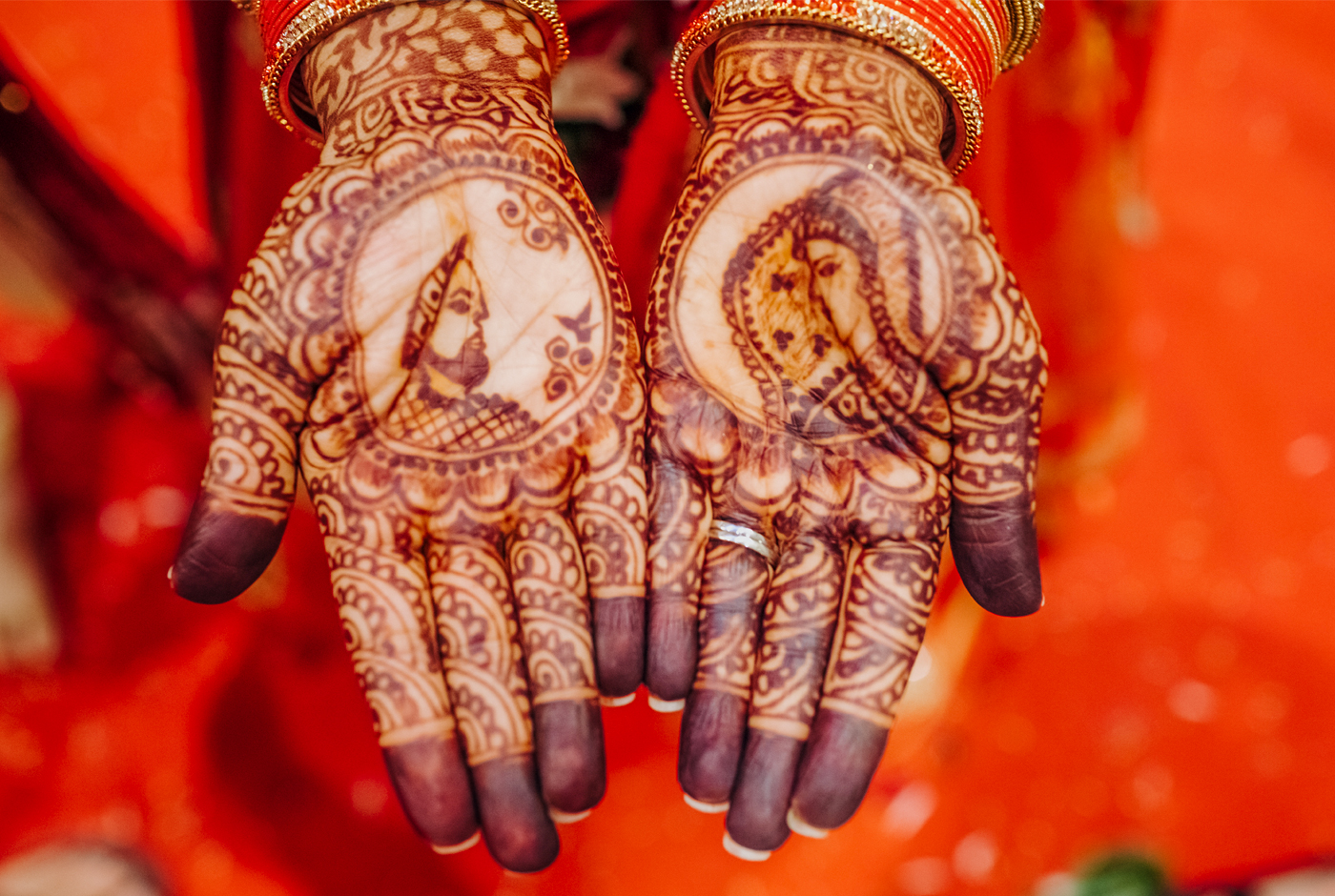
An important custom during the Teej festival is the application of Mehendi or henna, which stands for wealth, love, and marital bliss. On the first day of Teej, or the day before it begins, women, especially married women, apply elaborate Mehendi designs to their hands and feet. The cultural belief suggests that a deeper Mehendi stain signifies a stronger connection between a wife and her husband. The application of Mehendi transforms into a delightful and celebratory occasion as women come together to dance and sing Teej songs. This communal experience enhances the festive spirit and strengthens the friendships among women, creating lasting memories during the celebration. Additionally, Mehendi is applied as a means of artistic expression, highlighting cultural heritage and inventiveness.
First day of Teej - Dar Khane Din of Teej
Dar Khane Din, or Feast Day, is the name given to the first day of Teej. Women, especially married women, congregate at a familiar place, usually their mother's houses, on this day of celebration, indulgence, and sisterhood. They are dressed in their best red attire and accessorized with sindoor bangles and traditional jewelry as part of Torah singular, which resembles bridal adornment. A sumptuous feast planned by men serves as the day's focal point, giving women—who toil hard all year—the opportunity to relax and have fun without any responsibilities. A range of rich and delicious dishes, such as fried snacks, sweets, and traditional Nepali cuisine, are served at the lavish feast. Because many women receive multiple invitations from their brothers, they frequently dance off leftover food before consuming more. Aside from the meal, the day is devoted to storytelling, dancing, and singing. Their traditional Teej aongs reflect women's joys, difficulties, and goals. In the past, these songs have given women a forum to voice their hardships and social injustices. There is a great sense of happiness and unity as the celebrations go on until midnight. The next step in the Teej celebration is the 24-hour nirjala (waterless) fast. This shift from feasting to fasting draws attention to the deeper spiritual meaning of the festivities.
The second day of the Teej Festival - Barta (Fasting Day)
Teej, the second day—also referred to as Fasting Day—is the most spiritual day. Women pray for their husbands' longevity, their family's prosperity, and a happy married life on this day, which is marked by strict fasting and intense devotion. Unmarried Hindu women are encouraged to take part in this sacred celebration in the hopes of finding a suitable future husband. Women who observe the rigorous fasting custom known as Nirmala vrata abstain from food and liquids until dawn. Some might opt for a less stringent fast, consuming only fruits and liquids every day. Fasting is considered a show of love, sacrifice, and devotion, and it also fortifies their marriage and calls forth the blessings of Lord Shiva and Goddess Parvati. This act of fasting reinforces their spiritual connection during the festival as they follow these traditions; they also cultivate a sense of community and shared purpose among one another. Because of the ritual, women help each other on their spiritual paths and grow closer to one another. It is a potent reminder of the dedication and resiliency that characterize relationships.
Worship and Temple Visits
Clad in vivid red sarees and embellished with green and gold bangles, women get up early to bathe in purifying water before congregating in groups to visit Shiva temples, especially the most popular Pashupatinath Temple in Kathmandu. Women chant devotional hymns and sing traditional Teej songs as they circle the Shiva Lingam, a statue of Lord Shiva, at the temple. They ask Shiva and Parvati for their divine blessings by offering them flowers, fruits, belpatra (holy bilva leaves), and money. Lighting an oil lamp that must stay lit all night is an essential ritual because it is thought to bring their families peace, prosperity, and good fortune. In addition to strengthening the women's sisterhood and spiritual ties, this group's devotion gives them a sense of cohesion and purpose during this holy celebration.
Celebration and Spiritual Significance
Despite the rigorous fasting, there is a lot of dancing, music, and happiness throughout the day. Despite the strict fast, there is a lot of dancing, music, and joy all day, and women sing folk songs, fostering a sense of sisterhood and togetherness. As the day winds down, they typically break their fast in the late evening or early morning with sweet sugar water or sacred prasad.
On the third day of Teej - Rishi Panchami
As the last and most spiritually significant day of the celebration, the third day of the Teej festival in Nepal is called Rishi Panchami. Today, women seek to atone for their past transgressions and ask God to bless their families. The Seven Sages (Saptarishis), regarded as great saints in Hinduism, are the focus of the rites performed on this day, emphasizing devotion to them and spiritual purification. On the morning of Rishi Panchami, women get up early to bathe in red mud, which is revered as cleansing soil and leaves from the therapeutic Datiwan bush at ponds, rivers, or other holy water sources. The purpose of this profoundly Hindu-based purification ritual is to wash away sins and rid women of past impurities, especially those related to menstruation. In observance of the Saptarishis, women dress in clean traditional garments, mostly red saris, and participate in puja, a Hindu prayer ceremony following their ceremonial bath. As a sign of respect, they present cash, food, fruits, and sacred grains while sitting in a semicircle and listening to a priest recite devotional prayers. Lord Shiva and Goddess Parvati, who stand for courage, devotion, and family harmony, are also revered alongside the Sages.
Women fast all day long, depriving themselves of food until they have finished their prayers and puja. This fasting is regarded as an expression of self-control, selflessness, and commitment to spiritual growth. After completing the rites, women break their fast with a sacred meal consisting of mutton soup, bean soup (Kwati), and sweet carrot dishes. Vegetarian options are also offered to preserve purity. Both married and single Hindu women who have had their first menstruation celebrate Rishi Panchami. This festival honors women's role in maintaining family values and the significance of their spiritual purification. Bathing with red mud and Datiwan during the Teej festival leaves is believed to make up for past transgressions and guarantee their family's prosperity and wellbeing.
A woman's vital role is portrayed during this festival when women pursue personal purification and fortify their bonds with their families and communities by engaging in these traditions during Teej. Teej songs are also central to the celebration of Rishi Panchami while portraying women as submissive and obedient; these songs have historically reinforced traditional gender roles. But more recently, they have changed to reflect women's challenges, goals, and social issues, turning the festival into a forum for women's empowerment. Women can renew their faith, cleanse their souls, and offer prayers for the welfare of their families as Rishi Panchami brings the Teej festival to a close. They feel blessed and at peace and more rooted in their cultural customs and beliefs as a result of this conclusion.
Teej 2025 Nepal: Nepalese Women's Festival
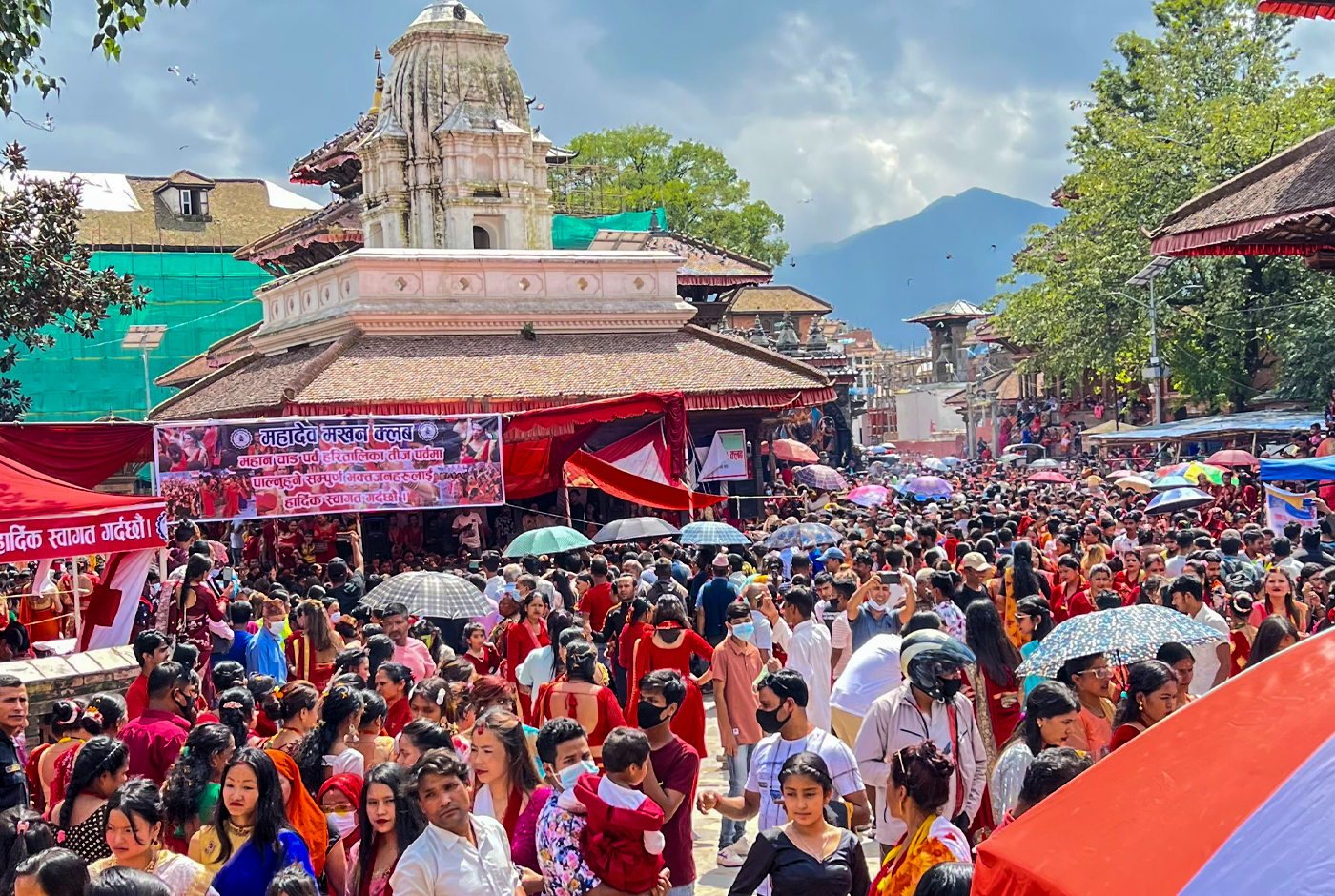
Teej Festival in Nepal 2025: Date and Significance
In 2025, the Teej Festival in Nepal starts on Tuesday, August 26, and lasts until Thursday, August 28, corresponding to Bhadra 10 to 12, 2082 B.S. In Nepal, this three-day festival is one of the most important Hindu holidays for women and honors Lord Shiva and Goddess Parvati. During this time, women participated in several customs and rituals that highlighted love, devotion, and family values. Women can come together, celebrate their culture, and deepen their spiritual ties during the festival.
Teej 2025 Schedule in Nepal: Which day is Teej Festival?
The principal day of Haritalika Teej is August 26, 2025 (Bhadra 10, 2082 B. S., Tuesday (Manglabar) ) and is observed by fasting, prayers, and other celebrations as a public holiday, especially for women. Ganesh Chaturthi will be celebrated on August 27, 2025 (Bhadra 11 2082 B. S.) A day is devoted to Lord Ganesha after the primary Teej ceremonies. The festivities with Rishi Panchami (ऋषिपञ्चमी व्रत (सप्तर्षी पूजा )) will end on August 28, 2025 (Bhadra 12 2082 B. S., Thursday) emphasizes spiritual cleansing and respecting the Seven Sages (Saptarishis).
Teej is a festival that honors spiritual devotion, marriage, and family wealth. It brings women from all over Nepal together for prayers, fasting, and cultural celebrations every year in August or September, depending on the Hindu lunar calendar. In addition to strengthening ties between family members, this festival encourages a sense of camaraderie among women by bringing them together to celebrate their common customs and beliefs.
Where is Teej Celebrated?
Teej 2025 Celebration in Pashupatinath will be delightful as usual
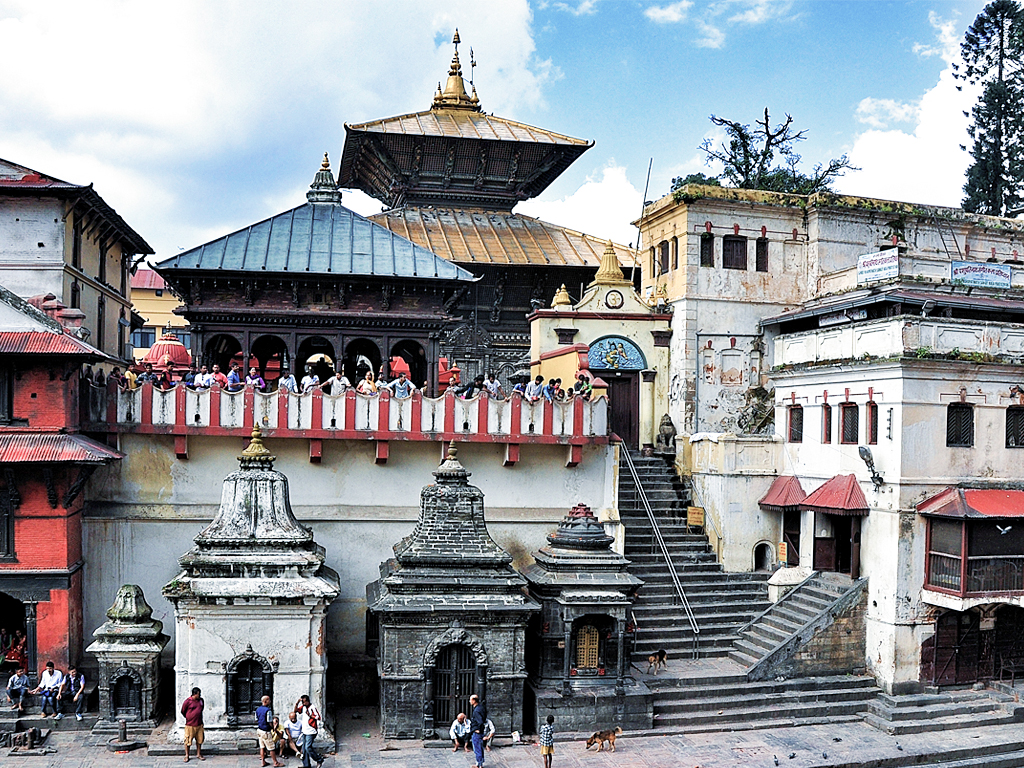
Teej is a national holiday in Nepal, with important celebrations in villages, cities, and temples. Thousands of women assemble at Kathmandu Pashupatinath Temple for the most spectacular festival, where they fast, pray, and ask Lord Shiva for blessings. Guhyeshwari Temple and other shrines in Patan and Bhaktapur are among the other noteworthy sites in the Kathmandu Valley. Teej is celebrated with great fervor at Janaki Mandir in Janakpur and with great vigor at Bindhyabasini Temple and along the lakeshore in Pokhara. Women swarm to the Dantakali Temple in Dharan, a significant location for Goddess Shakti worship. Large crowds of cultural events and communal feasts are typical in Lumbini Butwal and Biratnagar. Teej is observed with singing, dancing, and temple rites in cities like Dhangadhi and Mahendranagar in western and far-western Nepal. Regardless of the size of the festivities, Teej is still a national holiday that brings women together for joyful celebrations, fasting, and prayer.
It is also celebrated in several Indian states, with Rajasthan, Bihar, Uttar Pradesh, and Haryana being the most prominent.
Is Teej celebrated for husband?
Yes – in Nepal, Teej is traditionally celebrated for the husband.
The festival’s core purpose for married women is to pray for their husband’s good health, long life, and a happy marriage. This belief comes from the story of Goddess Parvati, who fasted and prayed with deep devotion until she was united with Lord Shiva. Following her example, women observe strict fasting—often without food or water—as a spiritual offering for their spouse’s well-being. Unmarried women also participate, hoping to be blessed with a loving and virtuous husband in the future.
The role of the husband in Teej
While the fasting and rituals are carried out by women, husbands have an important supportive role. They often encourage their wives, join them in temple visits, or help with the household while the women take part in celebrations. Many husbands also offer gifts—such as bangles, saris, or jewelry—as a gesture of appreciation, and join family gatherings to share the joy of the occasion.
Teej 2024 in Nepal: When was Haritalika Teej 2024 date?
Teej 2024 is poised to captivate hearts once more with its vibrant traditions, soul-stirring rituals, and deep-rooted cultural resonance across India and Nepal. This year, the sacred trilogy—Hariyali Teej 2024, Kajri Teej 2024, and Hartalika Teej 2024—will unfold in full splendor during the monsoon season.
Hariyali Teej 2024 date falls on 7 August, followed by Kajri Teej 2024 on 22 August, while Hartalika Teej 2024 date is marked for 6 September. For those seeking precision, Hartalika Teej 2024 puja muhurat and teej 2024 date and time vary by region—always consult the local calendar for the exact teej puja muhurat 2024.
Whether celebrating teej 2024 Nepali style or honoring the teej 2024 Sindhi customs, devotees observe Teej Vrat 2024 with devotion. Popular queries include teej 2024 kab hai, teej 2024 me kab hai, and teej kb hein 2024—a reflection of its widespread significance.
Mark your calendars for teej 2024 in September, though some regions note a teej 2024 November observance. Women adorn intricate teej mehndi design 2024, sing folk songs, and rejoice under lush, rain-drenched skies. Let the teej festival 2024 illuminate the spirit of resilience and feminine devotion.
Teej 2023 festival date: When was Teej 2023 celebrated in Nepal?
Teej 2023 was a vibrant display of devotion, celebrated with unmatched fervor across northern India and Nepal. Observed on Teej 2023 date and time—18 September 2023, the Hartalika Teej 2023 fast brought women together in red sarees, singing traditional songs under moonlit skies. In Teej 2023 Bihar, rituals echoed with ancient chants, linking generations through belief. Hariyali Teej 2023 and Kajri Teej 2023 also marked auspicious days earlier in Teej 2023 September. People searched: teej 2023 kab hai, teej 2023 kab tha, and even teejay mixtape 2023 mp3 download, showing its cultural imprint. Teej festival is celebrated in which state? Rajasthan, Bihar, and Uttar Pradesh stand out. Curious about Teej 2024? Mark your calendars early.
Teej 2022: When is Teej in 2022?
In 2022, Teej, specifically Hartalika Teej, was celebrated on August 30th in Nepal. It's a Hindu festival where married women fast and worship Lord Shiva and Goddess Parvati for the long life and happiness of their husbands.
Teej 2021 date: When was Teej celebrated on year 2021?
In 2021, the Nepali festival Teej (Haritalika Teej) was celebrated on August 23rd, 2021 (August 23, 2021 in the Gregorian calendar). In the Nepali calendar, it was Bhadra 7, 2078.
Teej songs: Popular, classic, and New ones Tij songs
Some popular Teej songs in Nepal include "Teejko Rahar Aayo Barilai", "Chhori Buhari Alchhi", "Nacham Chhamma Chhama", "Rato Sari Lagau", and "Maita Jau Piyari", according to Spotify playlists. Many Teej songs are released every year, and a few popular ones from recent years include "Dancema Ma Ek Number", "Teej Aayo", and "Chhadke Pote Rati Sari"
Several new Teej songs are already gaining popularity for the 2025/2082 Teej festival in Nepal. Some of the most talked-about include "Nariko Rahar" by Prakash Parajuli, Nisha Ranapal, and Smarika Dhakal, and "Teejako Ramita" by Shantishree Pariyar and Kastup Panta. Other notable songs include those featuring Pashupati Sharma, Samikshya Adhikari, and Khem Century.
Top 20 Famous Teej Songs of All Time – Nepali Teej 2025 Special
Teej is a time for celebration, dance, and music that brings everyone together. From timeless classics to fresh hits, these songs have been part of countless gatherings. Whether you’re looking for Teej songs download, searching for Teej songs lyrics, or humming along to your favorite Devi Gharti Magar Teej song, this list captures the heart of the festival. Each track here is a beloved Nepali Teej song that continues to make Nepali Teej 2025 joyful and memorable.
- TEEJ SONG – Devi Gharti Magar (2025): A new release filled with energy and festive beats for this year’s celebrations.
- Teej Geet – Juna Parsai (2024): A lively tune that’s quickly become a favorite among friends and families.
- Chitikkai Bha Chu Re – Sindhu Malla (2019): A fun and catchy song that still fills dance floors every Teej.
- Teej Ko Rahara – Manju Thapa (2020): Known for its vibrant rhythm and lyrics that bring the mood of the festival alive.
- Aayo Aayo Teej Tinwar – Seema Mishra (2003): A true classic that has been part of Teej playlists for decades.
- Ratai Sari Ratai Tiki – Mallika Karki (2023): A colorful and upbeat track that’s perfect for group dances.
- Dhakani Ra Kurauni Khauli Rati Daraima – Manju Thapa (2024): A joyful song that captures the fun of festive gatherings.
- Teejko Umanga Chhayo Barilai – Prekshya Gautam (2024): A bright and cheerful tune perfect for this year’s celebrations.
- Nadi Hai Sali Sali – Khuman Adhikari (2017): A playful hit that continues to be enjoyed year after year.
- Aayo Teejako Lahar – Melina Rai (2021): A spirited song that brings excitement to the dance floor.
- Lauri Harayo – Pashupati Sharma & Devi Gharti Magar (2022): A lively duet that has become a festival favorite.
- Pankha Chalaideu – Khuman Adhikari (2016): Loved for its simple melody and dance-friendly beat.
- Batti Balnai Pardaina – Pashupati Sharma (2016): A feel-good tune that lights up any celebration.
- Pokharako Phewa Taal – Pashupati Sharma (2012): A song that blends nostalgia with festive joy.
- Hami Tin Bahini – Prakash Saput & Team (2025): A fresh release with strong festival vibes.
- Bhijayo Fariya – Pashupati Sharma (2025): A new favorite that’s already playing at gatherings everywhere.
- Udayo Fariya – Pashupati Sharma (2025): Another 2025 release full of energy and fun.
- Sunideu Shiva – Komal Oli (2025): A devotional track with a festive twist.
- Poila Jana Paam – Komal Oli (2006): One of the most iconic Teej songs ever recorded.
- Aaina Aama Ho – Devi Gharti Magar (2025): A heartfelt song that’s perfect for the festive mood.
Teej Festival: Types of Teej Celebrated Outside Nepal
Teej, which goes by different names and is associated with different customs, is observed in several places outside Nepal, especially in India. In India, three primary forms of Teej are observed.
Hariyali Teej: During the monsoon season, Rajasthan, Haryana, Punjab, and Uttar Pradesh celebrate Hariyali Teej, also known as Sindhara Teej or Shravana Teej.
Kajari Teej: The festival of Kajari Teej, also called Badi Teej, is celebrated 15 days after Hariyali Teej, mainly in Uttar Pradesh, Madhya Pradesh, and Bihar. Women pray for their husband's long life and sing traditional Kajari folk songs to mark this occasion.
Hartalika Teej: Celebrated in Maharashtra, Madhya Pradesh, Chhattisgarh, Jharkhand, and Bihar, this version of Teej is very similar to Nepali Haritalika Teej, where women worship Shiva and Parvati (also known as Teej Mata or Teej Devi) and observe nirjala vrat a waterless fast to find marital bliss.
The Hindu religion in Nepal and India places great importance on the rituals carried out during Teej, which enable women to strengthen their ties through standard communal practices and men to show their love and devotion because each ritual has profound meaning that allows them to do so while creating a supportive environment.
Red and green are the colors of Nepal's most popular Teej festival, which honors love and the value of family responsibilities. As Hindu women celebrate the sacred bonds that bind them as a family, this festive occasion invites introspection and thankfulness. The festival represents ideals that transcend cultural and conventional boundaries.
Celebrate Teej Festival 2025 with Nepal Hiking Team! Wear red and green sarees, capture beautiful moments, sing along to traditional Nepali Teej songs, and dance with us in joyful melodies. Experience the essence of Nepal’s festivals and embark on the best Nepal treks of your choice in the coming days!



